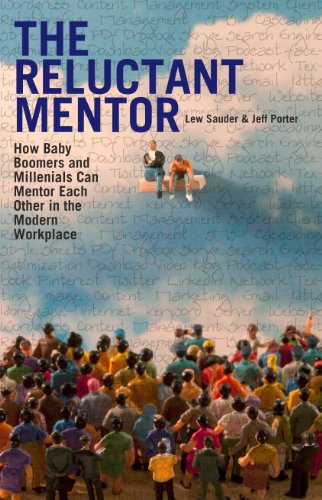
Business development challenge concept and beginning success idea
I recently was involved in a very successful project start up with a consulting client. Everything seemed to fall into place. The client walked away happy. We learned a lot about their business. It set us up for success for the future of the project.
As the saying goes, you only get one chance to make a first impression. The project startup is essential in making that first impression. When it is done right, it also prepares you with the tools to hit the ground running.
Ground Zero – Planning
One of the key things that made our project startup successful was the amount of planning we did. We met and discussed, reviewed checklists, coordinated with internal and external associates to ensure we had the key inputs to kick-off the project.
There was a lot of planning involved. But there were seven key aspects that contributed greatly to our success.
Determine the stakeholder’s key objectives
In our case, we were working in a consulting situation with a client. But even if you are working with an internal stakeholder, they are your client or customer all the same.
We had a project purpose which gave us a good idea of what we needed to accomplish on this project. But we wanted to “hear it from the horse’s mouth,” if you will. We wanted our key stakeholders – the ones who would ultimately use our completed product – to tell us what they were trying to accomplish.
This effort accomplished two things. First, it gave the stakeholders a chance to talk directly to the project team. They told us face-to-face what they wanted to accomplish. When they were done, they felt listened to.
Secondly, our team got to hear the real story. We had read all of the documentation, the proposal, and the PowerPoint detailing the steps we should follow. From talking to them, we heard about their pain points with their current system. They explained how they wanted to improve their business process. We learned how it would improve their performance. Most importantly, we learned how it would improve how they did business with their customers.
Kick-off the project in-person
The new world that we generally call “post-Covid” is a low-touch world. Many of us were heading that way well before 2020. And many companies are now pushing for their teams to return to the office. We will likely end up with some form of hybrid situation.
The fact remains that many of us work remotely. Even companies that are in the office have people distributed geographically. For those of us that are used to the remote model, meeting in person requires us to pivot in some areas.
To meet in person, in addition to wearing pants again, we need to leave our home office. This could mean driving to an office in your area or flying to another city. For some, this could mean relearning face-to-face communication. We now need to shake hands when we meet and make eye contact.
It might be a paradigm shift that is outside of the comfort zone for a lot of your team members. But meeting in person makes a big difference. The conversations you have become sprinkled with a lot of additional information that you don’t get on a Zoom meeting.
When you meet in person, you observe body language you probably wouldn’t see online. There is an elevated level of casualness in everyone’s communication that conveys more.
Additionally, when you take a break for everyone to get something to eat or drink or take a bio-break, there are side conversations. Whether you talk about their kids, or their pet, or something to do with work, you’re discussing things you might not discuss online. You develop a relationship with the people you’re talking to.
Video calls are great to meet with people and gather information. But so much more can be gathered with face-to-face communication. The relationships you develop from an initial meeting make it easier to hold future conversations. A lot of friction can be diffused in future situations that might have been otherwise contentious, because you know that person a little bit better.
Staff the project appropriately
Every project requires a certain array of skill sets. You may need technical engineers, business analysts, quality assurance engineers, and many other skills. We don’t always have the luxury of selecting the best and brightest of the lot to staff our projects. Even so, we need to match appropriate skills to the work required. Availability is not a skillset.
If you staff a business analyst on a project who has very little experience in the specific industry, their chance of success is diminished. Similarly, if you staff a software engineer on a task to work in a technology that they don’t have experience in, they will face a long learning curve. These situations will start any project off on the wrong foot.
Team members want a challenge and a chance to learn and grow. But there needs to be a balance of good experience to be able to do the job, with growth opportunities that will challenge the team to learn new skills and solve new problems.
Establish a good communication strategy
We all know how important communication is on a project. It’s important to establish standards to enable people to communicate effectively.
Internal team meetings should be scheduled at times that are convenient for all participants. In a distributed team, consider the time zone of each team member. Are team members across the four continental time zones in the US? Is there an offshore contingent to consider?
It may also be helpful to meet with the team to determine whether they have any windows of time to pick kids up from school or any other personal responsibilities. I’ve found it helpful to establish agreed upon core hours. A window of at least 4 common hours when everyone is available for meetings or ad hoc questions.
The same applies for meetings with stakeholders. Determine convenient times to work with them. Determine what times of day they normally work and when are good times to reach out to them with questions.
Meetings are a necessary evil. They suck a lot of time away from doing productive work. But we need meetings to communicate. The key is to schedule as many meetings as necessary, and no more than that.
Status is one of the things we need to communicate on a project. On agile projects, the normal practice is to meet with the team daily for a stand-up meeting. This is a meeting which is so short, you can stand up for it.
Stand up meetings are generally fifteen minutes or less. They allow each team member to give an update of 1) what they accomplished yesterday, 2) what they plan to work on today, and 3) any blockers they are experiencing. Each person’s update should take less than a minute. Any blockers should be resolved outside of the meeting with only the team members necessary to unblock.
Stakeholders should be given a status update on a weekly basis. In most cases, status can be presented in thirty minutes or less. It’s important to have a well-organized status report that provides the information succinctly and is easy to understand.
Establishing a communication strategy can ensure that you are using your meeting time effectively. It also allows all project stakeholders to know when and how they will receive project information.
Agree upon the project approach
I mentioned stand-up meetings above, used in agile projects. Agile is an approach where the team develops a backlog of everything that needs to be done. The team then prioritizes the backlog of work every two weeks and plans the work two weeks at a time. It’s based on the knowledge that priorities change over time. Addressing the priorities every two weeks allows us to always be working on the most important items.
The opposite approach is called “waterfall.” In this approach, all requirements are defined up front. Then all the work is done. Then quality assurance is completed. When all of this is done, the entire defined project is delivered to the customer.
There is a myriad of hybrid scenarios to these two approaches. Working with your stakeholders to define an agreed-upon approach that will deliver the greatest amount of value in the most efficient manner will help to ensure the success of the project.
Address the intangibles
There are many intangible items to consider when starting a new project. Among them, what is the culture of the business group you will be working with. Are they blunt and assertive? Or are they easy going and chatty when they meet. Understanding who you will be working with can help you when considering staffing and how you manage meetings with them.
In addition to culture, are there any strong personalities on the stakeholder team – or on the project team? Strong personalities can be a good thing or a bad thing. If someone is opinionated and outspoken, their inputs are valuable. They may need to be managed in a way that allows others to provide input. Strong personalities can take over a project, inhibiting participation from others.
Another intangible is what the expectations are from the project team. Is their intent to drive the project and have a project team that will follow their direction? Are they looking to the team to be the experts and give them advice on how to proceed? The team may need to adjust to the stakeholders’ expectations. Alternatively, the team may want to push back and try to change project expectations.
Hold a kick-off retrospective
Regardless of how successful your project startup is, it is important to take some time and analyze how it went. What were the things that worked the best. You will want to document those to make sure you do them for future project.
What did not go so smoothly? Without pointing fingers and placing blame, you will want to analyze as a team what things you could improve on. The next time you start a project, you will be glad you considered these things.
What has contributed to your project’s startup success in the past?
If you would like to learn more about a career in Project Management, get Lew’s book Project Management 101: 101 Tips for Success in Project Management on Amazon.
Please feel free to provide feedback in the comments section below.





0 Comments